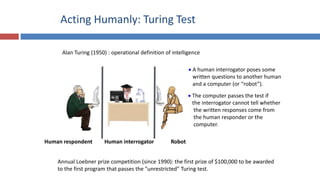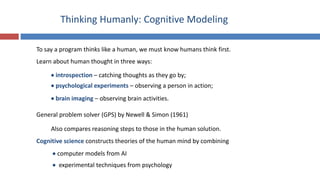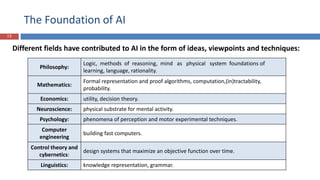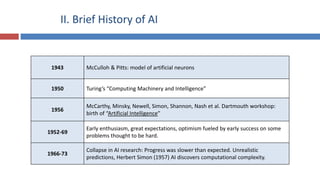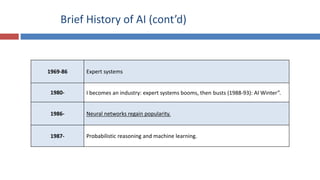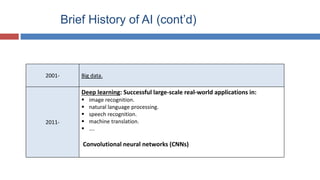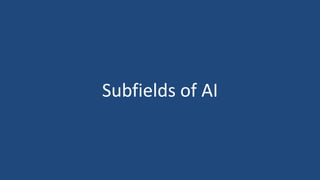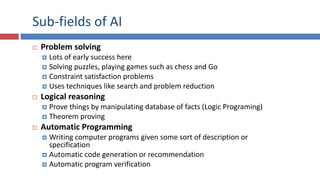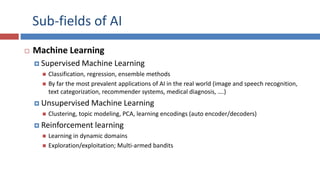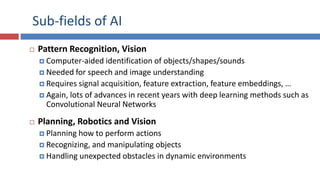This document provides an introduction to an artificial intelligence lecture. It begins with basic information about the course including references, grading, and contact information. It then outlines the topics to be covered which include definitions of intelligence and AI, a brief history of AI, and the main subfields of AI. The document discusses several approaches to AI including thinking humanly by passing the Turing test, thinking rationally using logic, and acting rationally as an intelligent agent. It also reviews the foundations of AI from various contributing fields and provides examples of AI in everyday life.




![What is AI?
Thinking Humanly Thinking Rationally
Acting Humanly Acting Rationally
“The exciting new effort to make computers think …
machines with minds, in the full and literal sense.”
(Haugeland, 1985)
“[The automation of] activities that we associate with
human thinking, activities such as decision-making,
problem solving, learning ....” (Bellman, 1978)
“The art of creating machines that perform
functions that require intelligence when performed
by people.” (Kurzweil, 1990)
“The study of how to make computers do things at
which, at the moment, people are better.” (Rich and
Knight, 1991)
“The study of mental faculties through the use of
computational models.” (Charniak and McDermott, 1985)
“The study of computations that make it possible to
perceive, reason, and act.” (Winston, 1992)
“Computational Intelligence is the study of the design
of intelligent agents.” (Poole et al, 1998)
“AI … is concerned with intelligent behavior in artifacts.”
(Nilsson, 1998)](https://image.slidesharecdn.com/ai01introduction-231212092808-ff537c88/85/AI_01_introduction-pptx-5-320.jpg)
